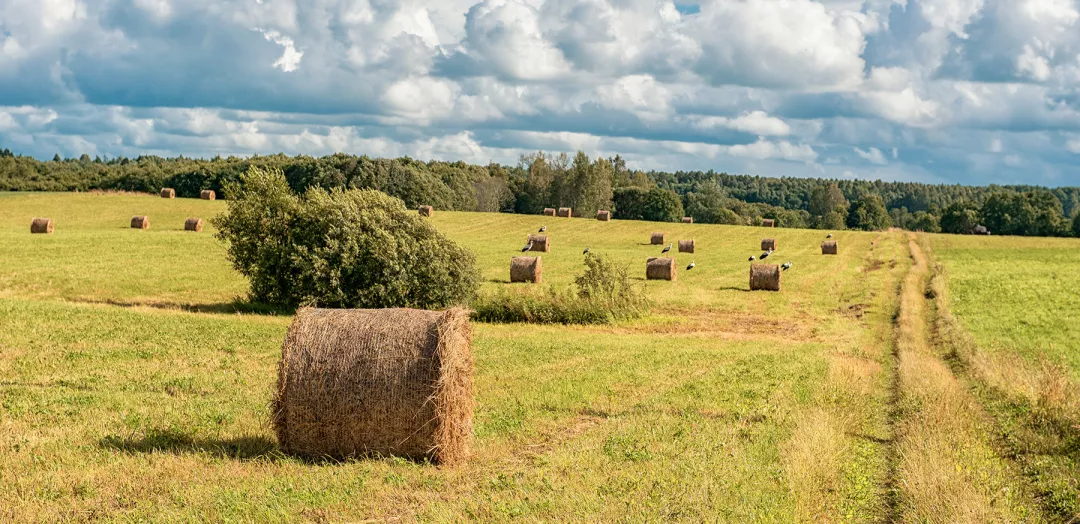Evaluation of the agri-environment and climate measures of the Lithuanian Rural Development Programme
- Evaluation
- Jobs, Growth and Equality in Rural Areas
- Environment
- Agricultural Productivity
- Climate and Climate Change
- Forestry
- Sustainability
- Evaluation
The aim of the study is to assess Measure 10 on agri-environment and climate for the programming period 2014–2020.
- Lithuania
- 2014-2022
- Environmental impacts


The study, published in 2022, aims to assess the relevance, effectiveness and efficiency of implementing Measure 10 of the Rural Development Programme for Lithuanian 2014–2020.
The research's objective is to assess the 14 activities of Measure 10 for the period 2015–2022.
Contribution of the measure and its activities to the three focus areas of the fourth priority 'Restoring, preserving and enhancing ecosystems related to agriculture and forestry' (4A, 4B and 4C) and the two focus areas of the fifth priority 'Promoting climate change adaptation, risk prevention and management' (5D 'Reducing greenhouse gas and ammonia emissions from agriculture' and 5E 'Fostering carbon conservation and sequestration in agriculture and forestry') was assessed either in a quantitative or qualitative way.
The following methods were used in the study:
- Theoretical methods - analysis of scientific and practical literature, generalisation, formulation of conclusions and recommendations;
- Quantitative methods (mathematical and statistical methods);
- Qualitative methods:
- Discussions in the focus groups (five discussions were organised).
- Expert interviews (15 people participated in interviews).
- 342 completed questionnaires.
The following data sources were used: EU and national legislation regulating agricultural and rural development policy, strategic documents, official statistics data, results of the studies and analyses prepared by Lithuanian and foreign scientists, recommendations of the European Commission, databases of the Institute of Economics and Rural Development of the Lithuanian Centre for Social Sciences.
The main indicators analysed at the level of the activities of the measure 'Agrarian environmental protection and climate' were the number of beneficiaries, supported area, planned to support area and, where relevant, GHG and ammonia emissions.
The study analysed the measure's impact on reducing GHG and ammonia emissions, carbon retention and sequestration, biodiversity, soil erosion prevention, and soil management, as well as how the selection of beneficiaries, the form of support (compensatory payments) and the arrangements for administering the support affected the achievement of objectives and results.
The report did not identify significant data gaps or methodological challenges. In some cases, the activities' impacts were described as limited due to the relatively small area supported.
The measure has one common output indicator for all its activities – 'Area (ha) related to agri-environment and climate measures'. The target value of this indicator reached 233,150 ha. During 2015-2022, the target was achieved by 60.8%.
Implementing the objectives of the fourth priority (Restoring, preserving and enhancing ecosystems related to agriculture and forestry) was not as successful as expected at the planning stage of the programme. During 2015–2022, all three focus areas (4A, 4B and 4C) of the fourth priority had a total output indicator achieved of 33.7%. The implementation of the objectives of the fifth priority (Promoting climate change adaptation, risk prevention and management) was better. The output indicator of the 5D focus area was achieved by 63.7%, while the output indicator of the 5E focus area exceeded the planned value by three times.
During 2015-2021, due to the implementation of the measure, 163.9 kilotonnes of CO2 equivalent (kt CO2eq) of GHG emissions and 1.4 thousand tonnes of ammonia emissions were avoided (focus area 5D). The main factor behind the reduction in GHG and ammonia emissions was the reduced use of fertilisers as a result of the requirements imposed by these activities.
The measure had a positive impact on carbon sequestration in agricultural land, resulting in the avoidance of 242.94 kt CO2eq of GHG emissions over the 2015-2021 period. The measure with the biggest impact included the activities 'Cultivation of catch crops on arable land' (107,2 kt CO2eq of GHG emissions) and 'Extensive management of grasslands by animal grazing' (88,2 kt CO2eq of GHG emission).
Appropriate selection criteria ensured a very high level of protection of biodiversity in the areas covered by the three activities of the measure: 100% of the areas declared under the activity 'Management of specific grasslands' fell within areas of European Commission importance for habitats and/or birds; 81% of the areas declared under the activity 'Conservation of aquatic warbler habitats in natural and semi-natural grasslands' fell within areas of Commission importance for habitats and/or birds; and 97% of the areas declared under the activity 'Conservation of aquatic warbler habitats in wetlands' were located in areas of Commission importance for habitats and/or bird conservation.
Activities requiring the establishment and maintenance of perennial grass strips had the greatest impact on reducing water erosion.
Author(s)
Institute of Economics and Rural Development of the Lithuanian Centre for Social Sciences
Resources
Documents
Evaluation of the agri-environment and climate measures of the Lithuanian Rural Development Programme
(PDF – 1.94 MB – 196 pages)